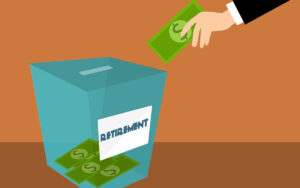Key Takeaways
- Many analysts forecasting a recession in Q2 and Q3
- Banks to kick off earnings season mid-month, followed by big tech and energy firms
- Comparing Q1 earnings data to those from previous quarters or years might offer very little insight
Instead of checking baseball box scores and breaking down Q1 earnings results, investors are likely to spend April watching the case count.
Cases of coronavirus, that is—because at this point, unfortunately, it has had a devastating effect on peoples’ day-to-day lives.
On another note there’s no baseball on the calendar, and it’s hard to get too excited about upcoming corporate earnings—much of which will consist of data from a distant time before the virus sank its talons deep into the U.S. economy.
Instead, what really might matter most in April—not only from a market perspective but also for the more important matter of public health—is how quickly or slowly the U.S. caseload grows and whether it starts to level off. By the end of the month, investors could have a much better sense, but in the meantime, the wild market volatility isn’t likely to dissipate.
Unless and until there’s a measurable impact from the draconian steps underway to fight this microscopic menace, it’s hard to see any sort of return to the glory days on Wall Street—although there have been signs of renewed vigor. As March turns to April, the markets are still digesting the impact of a $2 trillion stimulus package in the U.S. intended to jumpstart the flagging economy and offer assistance to companies most affected by the slowdown in commercial and industrial activity.
Unparalleled Times and No Guarantees
Analysts debate whether a recovery rally will be “u” shaped or “v” shaped or even “w” shaped, but in the end, any rally requires lots of things to come together—most of all more certainty.
The steps so far from the Fed, Congress, and global central banks haven’t stopped the market slide, and that’s because we still don’t know just how bad things might ultimately get on the health front. This makes it very hard for market experts, even those who’ve suffered through recessions and bear markets before, to offer much guidance. None of them have seen this, either.
The new month opens after a March that can only be described by an esoteric financial expression often used at times like these by seasoned traders: “Nuts.” There’s no sense rubbing salt in wounds that continue to sting for most investors, so let’s not remind ourselves that March saw major indices take a faster downturn than they did during the Great Depression. Instead, let’s look ahead to April as flowers bloom outside and hope springs eternal that maybe, just maybe, there could be some relief.
What’s to stop April from being another month of the market stumbling around the ring like a boxer who’s taken too many hits to the noggin? Well, as noted above, any sign of the caseload growth slowing, like it apparently did in China and South Korea. Recent news that China plans to end the lockdown on virus epicenter Wuhan by April 8 helped boost the market, providing possible light at the end of the tunnel.
That said, the very same day New York Gov. Andrew Cuomo announced that the worst-hit U.S. state hasn’t “flattened the curve,” putting a damper on things. More announcements like this in the new month would probably add to worries that the immense economic disruptions so far aren’t having enough impact. That would be rough news for the troubled markets to handle.
There’s no guarantee that improved news on the virus front would immediately turn the market around, either. For example, the worst losses of the 2008-2009 meltdown happened weeks to months after both Congress and the Fed announced unparalleled responses to the crisis. By that measure, even if the virus situation started to calm down in April, it might be a while before investors felt safe buying the dip in any major way.
From where things stand going into the month, it looks like the market is pricing in a recession. In late March, JP Morgan Chase (JPM) lowered its gross domestic product (GDP) estimates for the first two quarters to -4% and -14%, with a jump of 8% in Q3 expected. So basically, JPM predicts a recession (defined as two quarters in a row of negative GDP). Other firms predict an even worse Q2, with Goldman Sachs (GS) projecting a 24% plunge.
If JPM is right and Q2 does fall by 14%, that would be far more severe than the worst quarter of the 2008 financial crisis. Just in case it’s unclear to anyone, April marks the start of Q2.
Watching Earnings? Not So Much. Watching Guidance? Yes.
Normally, earnings season is a time to check some of the major companies and sectors and get a sense of how business was in the quarter—how earnings and revenue compared to previous quarters, which products were selling best, and what executives might say about the competitive landscape.
This coming month, the normal stuff will likely stay in the back seat. Q1 got intersected pretty nearly by coronavirus in mid-February. Things were rather typical—even robust perhaps—up to that point, but likely deteriorated rapidly shortly thereafter. Comparing how a company did in Q1 to how it did the previous year when the virus wasn’t part of the picture probably isn’t all that useful.
By all indications, companies seemed to be doing well in January and early February. That’s backed up by strong data from those months that continue to roll in, noted market research firm Briefing.com. However, everything hit the fan in mid-February and March, basically blowing company performance out of the water for the rest of the quarter. That’s why backward-looking earnings data won’t be as relevant this time around.
Instead, investors are likely to focus on what companies say about the future. The problem is that it won’t necessarily be so cut-and-dried. Companies, like all of us, are operating in an information vacuum. About all that’s clear about the impact of COVID-19 is the rising number of cases in the U.S., and calls for social distancing. No one has a clear idea what Q2 will look like from a business sense, let alone Q3. It’s hard to believe we’ll find out a lot more in April, but at least earnings season pushes the door open a crack into learning how companies view things.
One possibility is some companies presenting separate guidance paths that account for best-case, middle-case, and worst-case pandemic scenarios. If enough companies do this, analysts could conceivably start putting together best- and worst-case scenarios of their own based on corporate guidance, and then maybe there’d be a clearer sense of possibilities.
Resetting Expectations for Economic and Earnings Growth
As the epidemic keeps people at home, analysts continue to pare estimates for 2020 economic and earnings growth. U.S. GDP growth expectations have come down to 1.1% from the initial estimate of 2.3%, according to research firm CFRA. In addition, earnings per share growth projections for 2020 have slid to 0.2% this year, according to S&P Capital IQ consensus estimates, vs. a 7.9% growth rate anticipated at the beginning of the year.
This was supposed to be the year that earnings recovered from slow growth in 2019, many analysts had said. That’s not looking so likely any more. Earnings drive markets, so part of this long descent we’ve been in represents the market continually pricing in lower earnings growth assumptions.
By mid-April, earnings season kicks off in a big way with the major banks reporting. While their businesses have probably been hurt badly by the roadblock in economic activity, a few banks might have made up for some of that with heavy trading revenue as the market dived in February and March. One thing to listen for on these bank calls is any comments on credit quality. If it sounds like the banks are having to take severe measures to protect themselves from corporate loans that might not get paid back, that would be a time to worry.
However, investors might not get a real sense of the full scope of the financial earnings picture until Q2 earnings in July, Briefing.com noted. At that point, with an entire quarter of virus-related slowdown in the books, bank executives with their fingers on the pulse of the economy could provide investors insight on things like student lending, auto loans, credit cards, mortgages, and corporate financing. So the message on Q1 earnings season might be, wait until next quarter.
Even if the best-case scenario takes place and the virus starts to lose its grip, investors face a series of data readings in April that could range from bad to incredibly awful, to use some other esoteric financial terms. In this scenario, the market might seem headed up, only to hit speed bumps every time a new set of disappointing data from February and March hit the tape.
This would be a test for investor sentiment. The market tends to be forward looking, and may start to recover before the actual economy improves. Will people be able to look past some disheartening numbers and keep their eyes on what’s hopefully a brighter future? That’s what we saw as the market rallied in 2009 and 2010 from the depths of the 2008 recession. Even when unemployment levels averaged more than 9% through much of 2010, the major indices had made their lows in early 2009 and were galloping higher.
Past isn’t necessarily precedent. The virus isn’t the same scenario as the financial crisis. All we know is that markets tend to get ahead of the economy, and that’s possible this time as well. However, if investors focus only on data like payrolls and housing, things might look pretty bleak in April and beyond. After getting used to monthly jobs growth of 200,000 or more, investors very possibly could see the opposite in coming months, with massive job losses. The only question is whether fiscal and monetary stimulus can ease some of the pain.
How to Approach this Market? Gingerly
As we’ve been noting, this is a very dangerous market to venture into and arguably one that should only be traded in small increments, possibly by scaling in and out using dollar-cost averaging. It might get worse before it gets better. Try and keep your composure, even if it’s hard to do.
Anyone taking a new position should probably consider widening their levels with this high volatility. Swings are likely to stay dramatic for a while. Widening levels means expecting things to move higher or lower more sharply and quickly than normal, so be aware of what you’re comfortable potentially losing and the duration you’re thinking about. If it’s for the long-term, be ready to suffer a little now and keep your eye on the ultimate destination.
Now might be a good time to consider your investing time horizon and risk tolerance. That’s why you might want to think iteratively—meaning small pieces of your portfolio. Decisions made out of fear or greed typically don’t turn out so well.
If you feel you have to sell shares in these times, consider keeping it to small amounts. Having some cash on the sidelines isn’t necessarily a bad idea. However, if you can take a long-term view, this could be one of those times where it might help to keep things in perspective.
A lot of it depends on your position as an investor. If you’re young or middle-aged, you hopefully have many years ahead where your portfolio can begin to recover. While life doesn’t come with any guarantees, the stock market historically has always come back from times like this. Also, it might be helpful to keep perspective. As bad as it seems, the major indices are back to where they were in late 2016, which isn’t so long ago. By contrast, in early 2009, the market hit a 12-year low.
If you’re nearing retirement, it might be a good idea to do a quick check on whether your assets are allocated to the types of risks you’re comfortable with.



